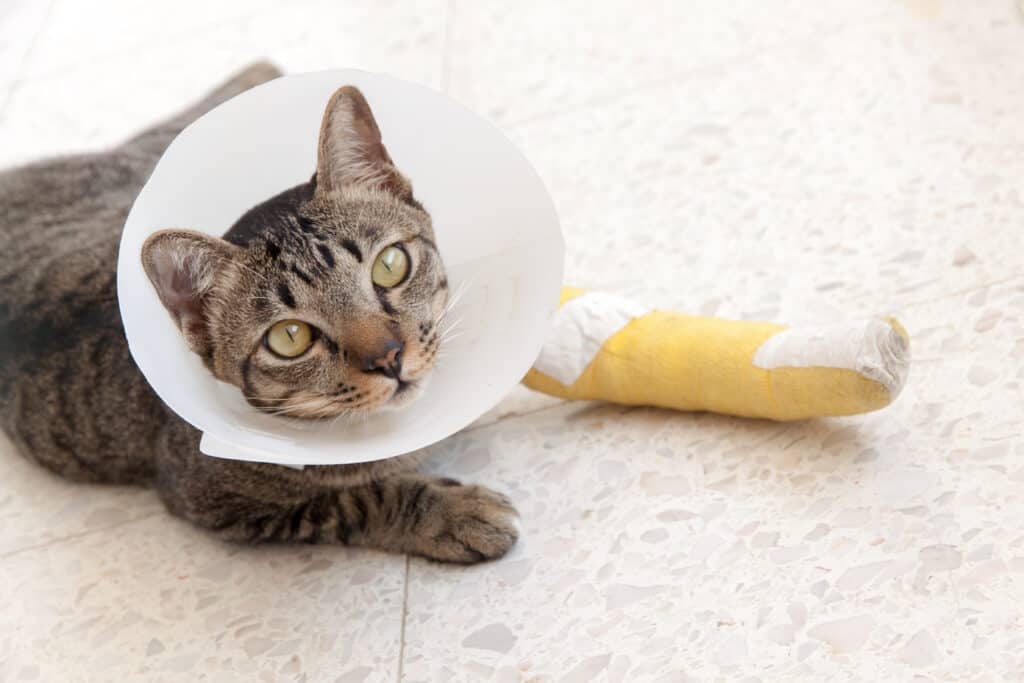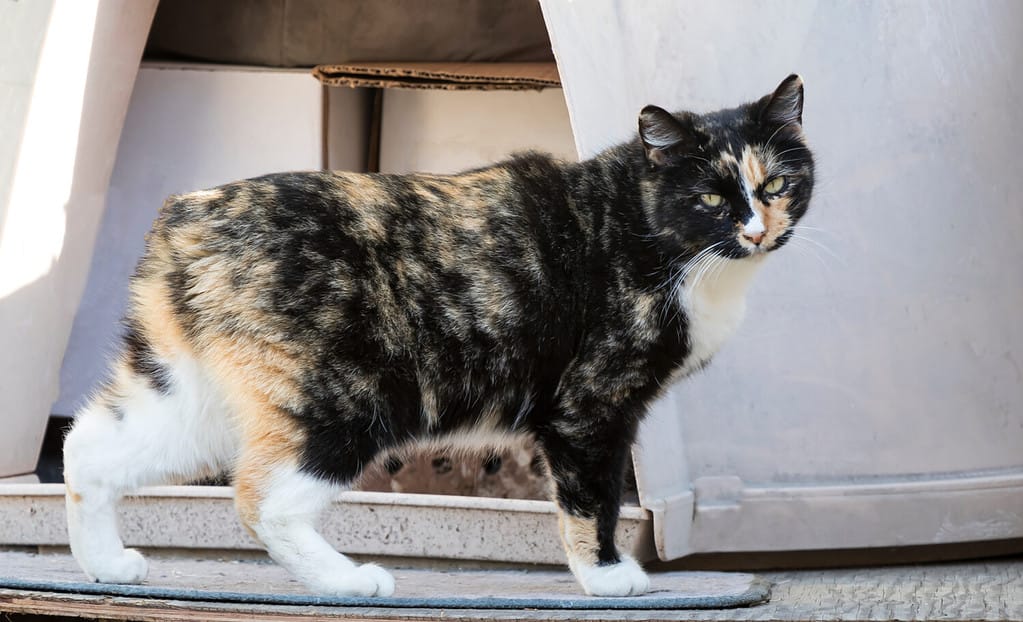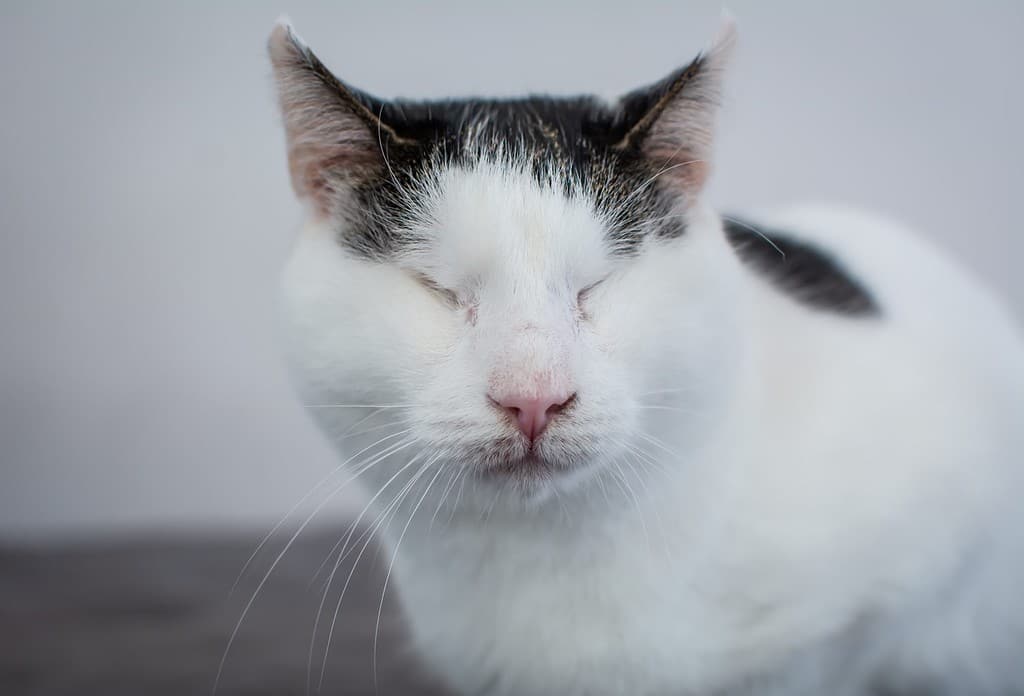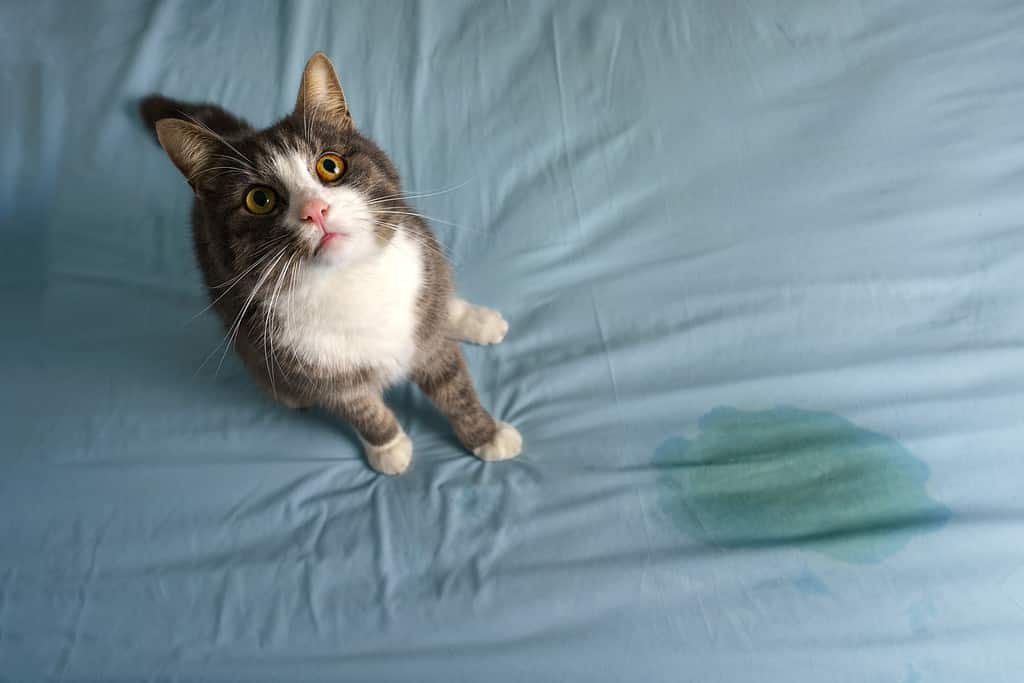Owning a pet is both an immense responsibility and a rewarding experience. This is especially true for those who care for cats with special needs. The bonds you form with disabled animals are arguably deeper as you learn to communicate in new ways and your heart softens just a bit more as you show up for them in all the big and small ways they need. If you’re thinking of adopting a special needs cat, good on you. With a bit of preparation and a lot of love, these kitties get a chance to thrive. Discover six types of special needs cats!
1. Cats With Cerebellar Hypoplasia

This disorder is not progressive, which means a kitty’s symptoms don’t worsen over time.
©Casey Elise Christopher/Shutterstock.com
Also known as “wobbly” cats, cats with cerebellar hypoplasia have trouble walking. In some cases, a wheelchair may be suitable. This disorder most frequently occurs when a kitten‘s mother gets the feline panleukopenia virus and passes it on to the kittens. In these cases, the kittens are born with cerebellar hypoplasia (CH).
These cats experience a lack of coordination and exhibit jerky movements. When walking, cats with CH often fall over and some cats may struggle with walking altogether. Although the mother may pass the virus to her kittens, they do not become infected with the virus itself. CH develops because their cerebellum did not get a chance to properly develop while they were still in their mother’s womb.
Dr. Colleen Wallace, a cat-only vet at Cozy Cat Veterinary Hospital in Raleigh, North Carolina, told A-Z-Animals, “The prognosis for cats with cerebellar hypoplasia varies, but the intention tremors in the majority of the affected cats improve as they get older, until in some cases, it is hard to tell that they are affected at all. Most cats and their owners become used to the physical limitations and the cats can have a good quality of life even if they have permanent defects.”
2. Cats With Missing Limbs

Some leg injuries heal but others require amputation, which means a kitty has to get used to life on three legs.
©PeachLoveU/Shutterstock.com
Three-legged cats are affectionately called ‘tripaws.’ These kitties may have been born this way but that’s rare. It’s much more likely that a cat missing a leg has suffered some kind of injury that required amputation. Cats are resilient, however, and after healing completely, they get accustomed to life on only three legs.
As an owner of a special needs cat like this, you can make sure that whatever they need is easily accessible to them and that they always have a comfortable place to retreat to when they’re tired and need to get some rest. Though impaired, cats with missing limbs can still live long, healthy lives.
3. Deaf Cats

A deaf cat relies on visual cues and routine.
©Kristi Blokhin/Shutterstock.com
Deafness may occur in cats from birth, or it may be a condition that develops after trauma, ingestion of toxins, or as a result of other issues like cancerous growth. When caring for a deaf cat, there are a few measures you must take to ensure that your kitty is comfortable and feels safe around you.
You’re going to work with your cat’s visual faculties, which means you’re also going to be using your body language to communicate with your kitty. Your cat hasn’t lost its sense of smell, so yummy treats are great incentives. Most importantly, deaf cats are going to really lean on your routine. This way, they know exactly where to go when it’s mealtime and they can eagerly await your arrival from work each afternoon.
4. Cats With Manx Syndrome

A cat with Manx syndrome requires significantly more hands-on care than cats without this condition.
©PradaBrown/Shutterstock.com
A tailless cat may deal with several different issues, including problems with the colon, urinary bladder, and the use of the hind legs. Manx syndrome occurs most frequently in Manx cats. This is often a genetic defect but how it manifests in each cat varies.
A cat with Manx syndrome does not have a tail and may experience an array of symptoms, some more severe than others. There’s no cure for Manx syndrome, which means an owner can only offer supportive care. This requires keeping the area clean and managing any hygiene issues or incontinence issues. With these cats, an owner has to be significantly more hands-on and available to care for their kitty.
5. Blind Cats

Cats that can’t see rely heavily on routine and memory as they map out the space where they live.
©Paulina Grzybowska/Shutterstock.com
Cats can be born blind but blindness in cats can also happen as a result of trauma or an underlying disease. In many cases, early treatment can help preserve vision but unfortunately, some cats do lose their vision in one or both eyes.
Caring for a blind cat requires a mindful approach. They need to get the lay of the land so it’s not a good idea to move furniture around or introduce new items into the space. Although these cats can be left alone for short periods, you must give them a bit of background noise as any new sound they hear could startle them. Overall, blind cats use their other senses and the routine you set to feel at home and comfortable.
6. Incontinent Cats

There are some treatment options for incontinence in cats but in some cases, it’s a lifelong condition.
©Daria Kulkova/iStock / Getty Images Plus via Getty Images
An incontinent cat doesn’t have control over its bladder (or bowel, depending on the type). This leads to accidents around the home but with proper care, you can keep your cat clean and accidents to a minimum. This condition could be congenital or acquired.
Treatment for incontinence depends on the cause. In some cases, medications are prescribed. Other cats may be eligible for surgery but if the condition is ongoing, you may have to put in more work to keep them clean and healthy. Diapers may be helpful as well as regular grooming, including sanitary clips and baths.
The photo featured at the top of this post is © Paulina Grzybowska/Shutterstock.com
Thank you for reading! Have some feedback for us? Contact the AZ Animals editorial team.







